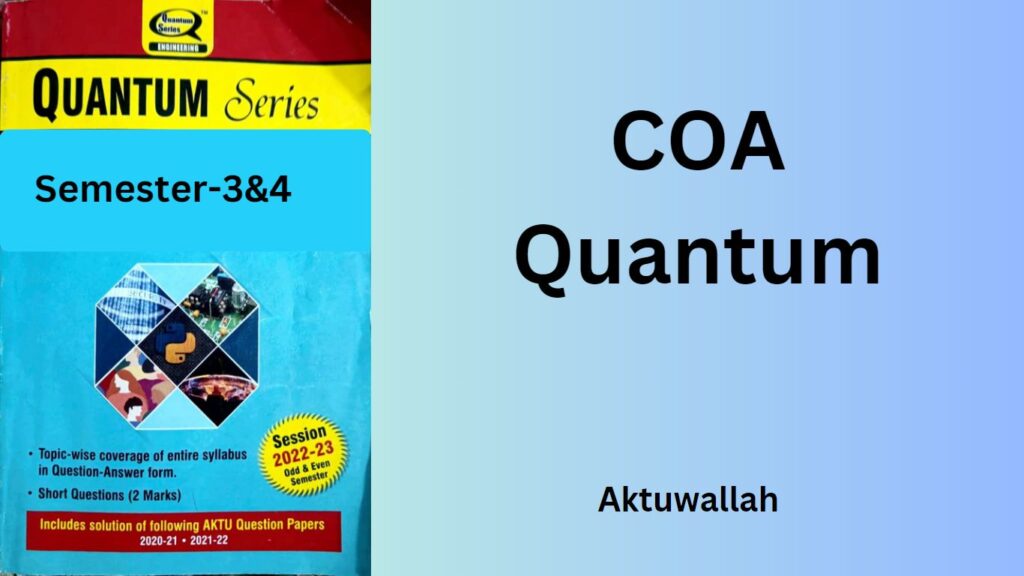Download Computer Organization and Architecture Quantum pdf for Aktu B-tech 2nd year:
Computer Organization and Architecture (COA) is a vital subject for B-Tech 2nd year students, particularly those pursuing computer science and engineering. COA deals with the study of how computer systems are structured, designed, and function. In this article, we will provide an overview of COA and discuss its significance in the second year of the B-Tech program. Additionally, we will explore the core topics covered in COA, including logic gates, CPU architecture, memory organization, input/output systems, and pipelining. Furthermore, we will provide a link to download Computer Organization and Architecture Quantum pdf specifically tailored for AKTU B-Tech 2nd year students.
Way to Download the Computer Organization and Architecture Quantum PDF:
To access a concise and informative resource on Computer Organization and Architecture tailored specifically for AKTU B-Tech 2nd year students, you can download the PDF by clicking the link below:
GET PDF
Download other subject quantum pdf: Click Here.
Download handwritten notes for aktu B-tech 2nd year: Click Here
This PDF will provide you with valuable insights into the topics discussed in COA and serve as a handy reference throughout your studies
Exploring the Topics of COA
Logic Gates and Boolean Algebra
Logic gates are the building blocks of digital circuits. They process binary inputs and produce binary outputs based on Boolean algebra principles. Understanding logic gates and Boolean algebra is fundamental to comprehending the design and behavior of digital systems.
CPU Architecture and Instruction Set
The CPU (Central Processing Unit) is the heart of a computer. COA covers CPU architecture, which includes components such as registers, arithmetic logic units (ALUs), and control units. Additionally, it encompasses instruction sets, which define the set of instructions that a CPU can execute.
Memory Organization and Hierarchy
Memory organization involves understanding how data is stored and accessed in a computer system. COA explores different levels of memory hierarchy, including cache memory, main memory (RAM), and secondary storage (hard drives, SSDs). Students learn about memory management techniques and the trade-offs between speed, capacity, and cost.
Input/Output Systems and Devices
COA delves into the mechanisms by which computers interact with input and output devices. This includes studying different types of devices such as keyboards, mice, displays, printers, and network interfaces. Students gain insights into input/output operations, interrupt handling, and device controllers.
Pipelining and Parallel Processing
Pipelining is a technique used to enhance CPU performance by overlapping the execution of multiple instructions. COA covers the concept of pipelining and its benefits. Furthermore, it introduces the idea of parallel processing, where multiple processors work together to solve computational problems faster..
Conclusion
Computer Organization and Architecture (COA) is a critical subject for B-Tech 2nd year students, enabling them to understand the design and functioning of computer systems. By studying COA, students gain a solid foundation in topics such as logic gates, CPU architecture, memory organization, input/output systems, and pipelining. These concepts are vital for success in advanced computer science and engineering courses. To enhance your understanding of COA, make sure to download the Computer Organization and Architecture Quantum PDF designed specifically for AKTU B-Tech 2nd year students.